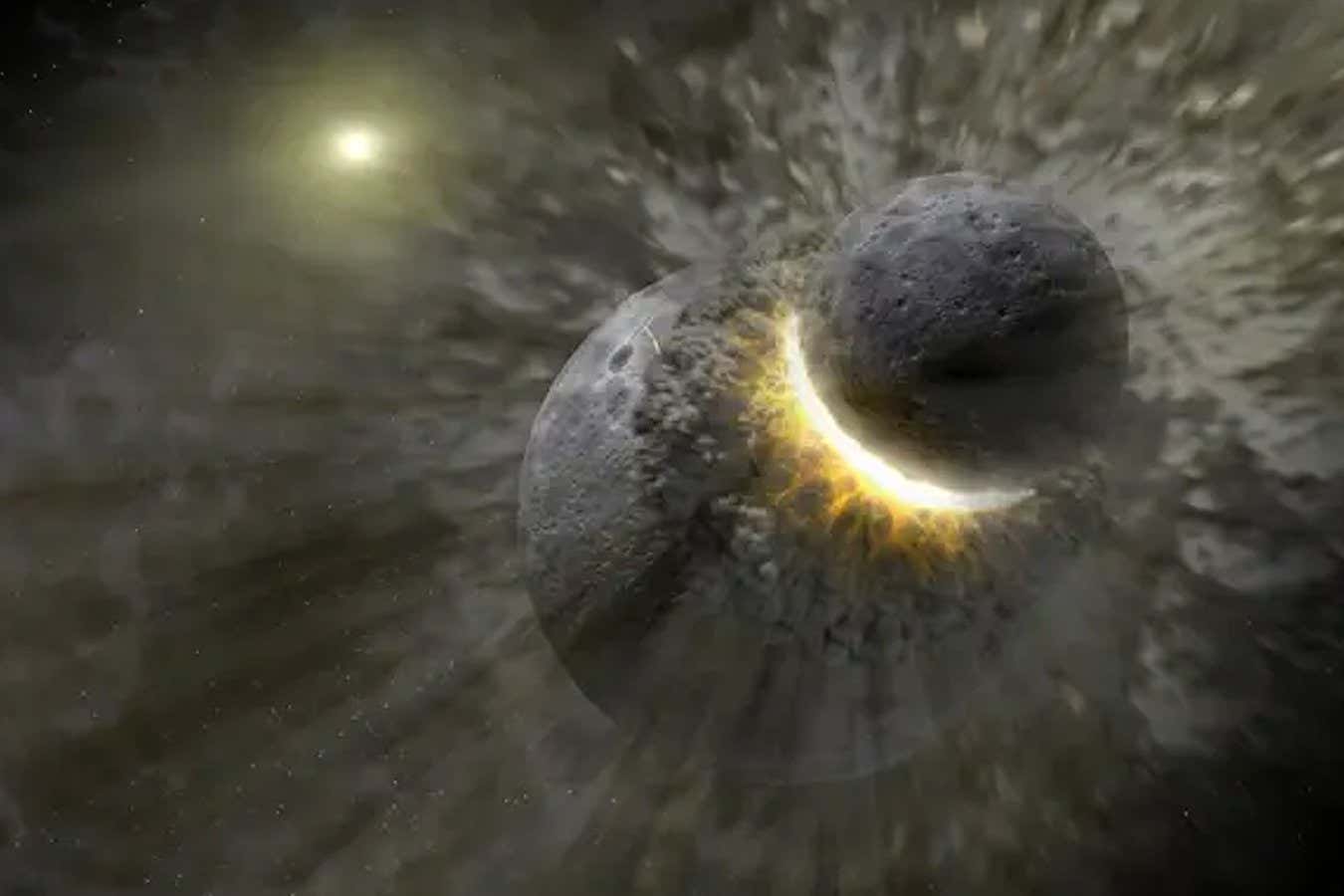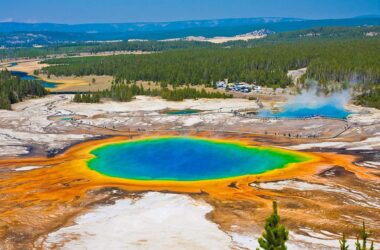Earth is thought to have collided with a Mars-sized planet billions of years ago
NASA
Ancient chunks of a planet called Theia might be trapped within the Earth’s mantle. According to the giant impact hypothesis, the moon was formed when a Mars-sized object named Theia collided with Earth and shattered, with the debris coming together to form the moon. However, it appears that Theia may not be completely gone, as there are two regions in Earth’s mantle that exhibit different behavior compared to the surrounding rock. These regions, known as large low-shear-velocity provinces or LLVPs, are denser than the rest of the mantle, causing seismic waves to travel slower through them.
Researchers, led by Qian Yuan from the California Institute of Technology, proposed a connection between the giant impact and the LLVPs. Through simulations, they discovered that the rocks from Theia’s mantle would have melted and sunk to the boundary between Earth’s mantle and core, forming a thin layer that covered the entire core. Over time, convection within the mantle would have gradually gathered this dense material into the two distinctive regions observed today.
Due to the depth of these LLVPs, it is not possible to confirm their origin by physically digging down to them. However, there may be alternative methods to determine if they are indeed remnants of Theia. Yuan explains that bubbles of hot material rise from the LLVPs, bringing some of the chemical signals to the surface. These chemical signatures resemble those found on the moon rather than on Earth, supporting the idea that the LLVPs and the moon are indeed remnants of Theia, thus affirming the giant impact hypothesis.
The impact that created the moon is considered one of the most significant events in Earth’s history. It not only affected the moon’s formation but also had a profound impact on Earth’s atmosphere, crust, mantle, and core. Yuan suggests that if we want to search for other planets similar to Earth, those that have experienced giant impacts like Theia might be good candidates.
Topics:








